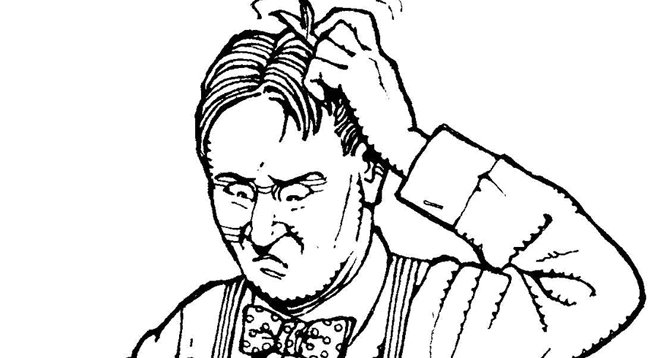 Facebook
Facebook
 X
X
 Instagram
Instagram
 TikTok
TikTok
 Youtube
Youtube

Heymatt:
My brother-in-law used to tell me this riddle all the time, but he passed away a few years ago and now none of my family can remember the answer, if ever there was one: “Three guys check into a hotel and each pay $10 to share a $30 room. Later, the clerk realizes the room was supposed to be $25 and he takes five $1 bills to the guys in the room. Each guy takes $1 back and they give the clerk a $2 tip. Since the guys got one dollar back, they each paid $9 for the room. 3x$9=$27. Add the $2 tip and you have $29. Where did the other dollar go?”
— Ken, Cardiff

More than a riddle, this is a classic example of deceit via misdirection and logical fallacy. The exercise describes a bogus sort of “cash reconciliation” that sets up some false premises and makes you assume some things that aren’t true. “The guys each paid $9” is the biggest lie. Just look at it this way, if they each paid nine dollars for the room, they would have paid $27 for a $25 hotel room! We know the room was $25, because the guests shelled out $30 at the beginning and then $5 comes back. It’s easy to lose track of the real monies when following a series of dubious facts and misdirected assumptions. The classic change-raising con works in much the same way. A grifter can convince a hapless store clerk to miscount cash by setting up bogus math that works out in the con-man’s favor.


Heymatt:
My brother-in-law used to tell me this riddle all the time, but he passed away a few years ago and now none of my family can remember the answer, if ever there was one: “Three guys check into a hotel and each pay $10 to share a $30 room. Later, the clerk realizes the room was supposed to be $25 and he takes five $1 bills to the guys in the room. Each guy takes $1 back and they give the clerk a $2 tip. Since the guys got one dollar back, they each paid $9 for the room. 3x$9=$27. Add the $2 tip and you have $29. Where did the other dollar go?”
— Ken, Cardiff

More than a riddle, this is a classic example of deceit via misdirection and logical fallacy. The exercise describes a bogus sort of “cash reconciliation” that sets up some false premises and makes you assume some things that aren’t true. “The guys each paid $9” is the biggest lie. Just look at it this way, if they each paid nine dollars for the room, they would have paid $27 for a $25 hotel room! We know the room was $25, because the guests shelled out $30 at the beginning and then $5 comes back. It’s easy to lose track of the real monies when following a series of dubious facts and misdirected assumptions. The classic change-raising con works in much the same way. A grifter can convince a hapless store clerk to miscount cash by setting up bogus math that works out in the con-man’s favor.
Comments